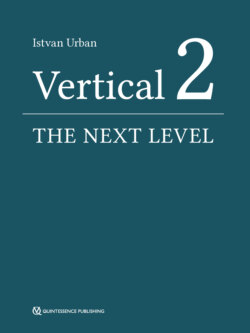Читать книгу Vertical 2: The Next Level of Hard and Soft Tissue Augmentation - Istvan Urban - Страница 23
На сайте Литреса книга снята с продажи.
Data collection
ОглавлениеPatient information including gender, age at the time of surgical treatment, and self-reported cigarette consumption were recorded. Intraoperatively, the extent of the baseline vertical deficiency was measured by one clinician (IU) in millimeters from the residual ridge crest to one reference line using a UNC-15 probe. One of two reference lines was used to ensure consistent vertical measurements and to serve as ideal heights: 1) an imaginary line connecting the interproximal bone height between adjacent teeth; or 2) in the case of distal edentulism, an imaginary line connecting the proximal tooth bone height to the projected non-resorbed alveolar crest of the edentulous area. The vertical bone gain was evaluated at the time of implant placement (re-entry) and measured in the same way as described above. The horizontal distance between the site of measurement and the root surface/non-resorbed alveolar crest of the nearest tooth was recorded to guarantee reproducible measurements in the mesiodistal direction.
‘Absolute gain’ was defined as the amount of bone gained in millimeters regardless of baseline vertical deficiency. ‘Relative gain’ was defined as the percentage of the vertical deficiency that was resolved relative to the ideal height.
